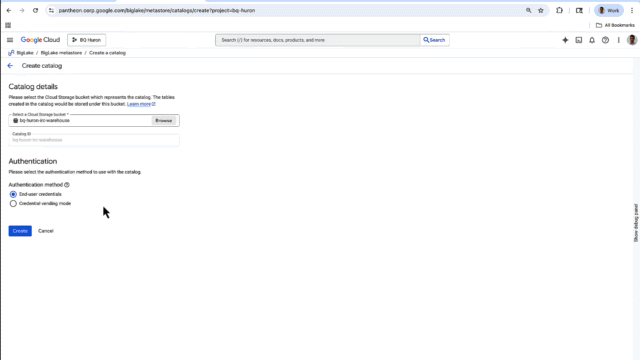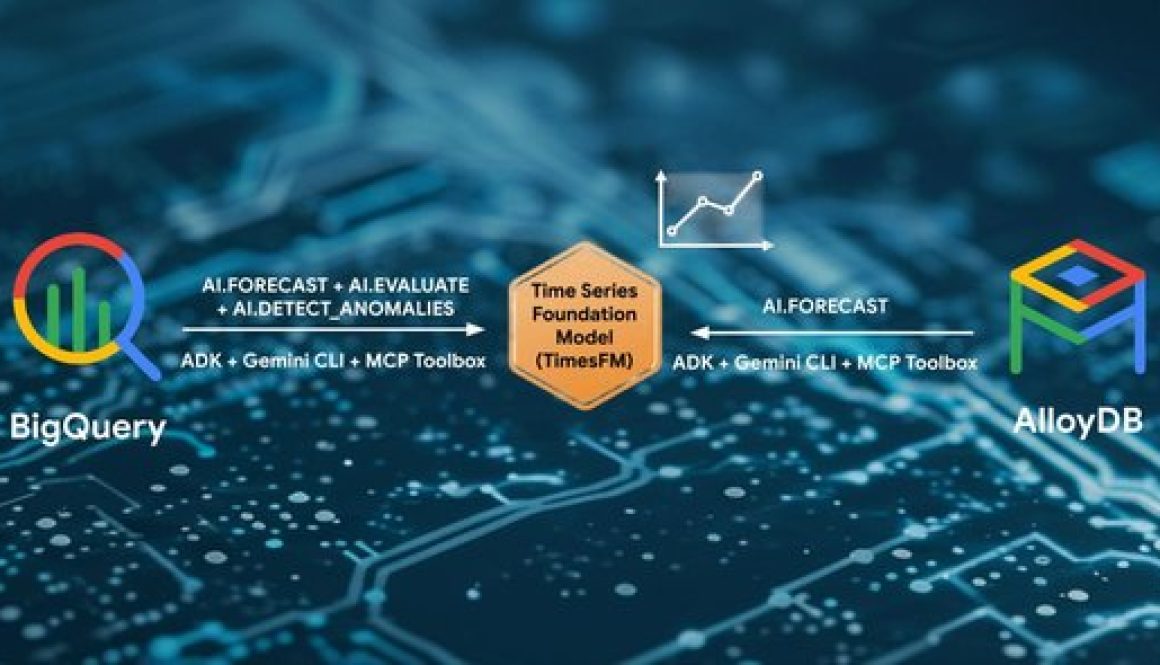GCP – Expanding Google Cloud’s Cross-Cloud Network with a groundbreaking AWS collaboration
Today, we announced a significant collaboration with Amazon Web Services (AWS) to offer a managed, private and secure, on-demand, solution for cross-cloud connectivity. This solution is designed to enable customers to easily build enterprise-grade applications that span both Google Cloud and AWS environments. This collaboration is particularly timely, as the adoption of multicloud applications is rapidly accelerating, driven in part by the rise of AI. A Forbes survey highlighted that 82% of respondents anticipate that the arrival of AI services will increase the demand for multicloud networking due to the scarcity of specialized accelerator resources and the availability of diverse AI agents across different vendors. The surge in multicloud adoption is a strategic imperative for organizations looking to build agentic AI applications, optimize workloads, access best-of-breed services, meet data residency requirements, and ensure the necessary resiliency for modern hybrid and multicloud applications.
To address the inherent network infrastructure challenges introduced by multicloud deployments, we designed the Cross-Cloud Network to simplify and optimize networking between Google Cloud and other providers.This commitment to multicloud integration has led to over 50% of the Fortune 500 currently using the Cross-Cloud Network, and this collaboration provides a significant boost. importantly, this new jointly engineered solution with AWS is being published under an open specification, creating an opportunity to expand the reach, allowing other providers to contribute and implement this solution in their own environments, further benefiting mutual customers.
Introducing the Cross-Cloud Interconnect for AWS
Today marks a major step in simplifying and securing the multicloud journey. We are thrilled to announce a first of its kind open specification that fundamentally streamlines private network connections between customers’ environments across different cloud providers. This groundbreaking joint specification has culminated in the preview of partner Cross-Cloud Interconnect for AWS, a powerful expansion of our Cloud Interconnect portfolio. This innovation allows you to build on-demand connections in minutes between your Google Cloud and AWS VPCs, transforming multicloud networking from a complex build into a simple, managed service.

This is more than just a connection — it’s a complete shift in how you adopt multicloud solutions. We are delivering substantial value to our mutual customers:
-
Simplicity and speed: Say goodbye to complex networking builds. This is a fully managed, cloud-native experience where a cross-cloud connection is as easy as peering two VPCs. We’re cutting end-to-end setup time from days to mere minutes, with flexible, on-demand bandwidth starting at 1 Gbps during preview and scaling up to 100 Gbps at general availability.
-
Secure by default: Your data’s security is paramount. All connections between the two clouds’ edge routers are MACsec-encrypted — providing line-rate performance with always-on encryption — for a more secure foundation.
-
Inherently resilient: Benefit from an inherently resilient architecture that provides layers of protection against facility, network, and software failures, ensuring your critical applications remain online.
-
Open and optimized: The foundation is an open specification for seamless adoption across the industry. You can also benefit from an optimized total cost of ownership through vendor consolidation and an on-demand service model that lets you provision exactly what you need, when you need it.
This service is launching with availability in key locations like N. Virginia, Oregon, London, and Frankfurt, with rapid expansion planned to more locations globally.
Simplifying cross-cloud connectivity
Before today’s jointly engineered solution, building applications that spanned multiple cloud environments was a significant undertaking, often becoming a barrier to multicloud adoption. Customers faced a complex, multi-layered process that involved cross-functional teams and substantial lead times.
A typical deployment required several intricate steps:
-
Procurement: Acquiring physical connections, whether dedicated or through a shared partner offering, and then building and managing the necessary infrastructure to ensure network availability and separation of fate.
-
Logical configuration: Establishing basic connectivity by meticulously assigning and negotiating non-overlapping link-local IP addresses and setting up VLANs.
-
Routing setup: Configuring BGP sessions, assigning Autonomous System (AS) numbers, and creating complex routing policies to meet specific performance and reliability requirements.
-
Security implementation: Conducting thorough security reviews and implementing custom solutions to encrypt traffic between the distinct cloud environments.
The integrated partner Cross-Cloud Interconnect offering completely abstracts away this complexity. Customers can now bypass all the manual steps and instantly leverage pre-built physical connections with built-in security and resiliency, achieving streamlined, on-demand connectivity between their Google Cloud VPCs and AWS.
Building this powerful cross-cloud connection is now remarkably simple. Customers configure a single “transport” resource in Google Cloud and accept it in AWS. This transport is an innovative, managed construct that completely abstracts and provisions the underlying physical interconnects, VLAN attachments, and Cloud Router instances. This profound simplification enables end-to-end connectivity in minutes, transforming multicloud deployment from a days-long engineering project into a simple, rapid configuration task.

Under the hood: a secure and resilient foundation
We co-designed our solution to deliver a secure and resilient foundation for cross-cloud applications, with a simple new service that doesn’t compromise on core enterprise availability tenets.
-
Privacy and security: All peering relationships are built between link local addresses, facilitating connectivity between IPv4 and IPv6 private address spaces across both environments. All underlying physical connections between Google Cloud and AWS edge routers are MACsec-encrypted, and both providers manage key rotation to meet enterprise security requirements.
- Quad-redundancy: To enable connectivity between a Google Cloud and an AWS cloud region, quad-redundant connections are leveraged, ensuring facility redundancy, as well as edge-router redundancy. This design helps protect from multiple simultaneous failure scenarios and provides high resiliency levels for joint customers.
- Managed operations are key to enabling integrated solutions. The newly introduced solution not only streamlines the physical and logical builds on behalf of joint customers, it also leverages a robust underlying proactive monitoring system that detects and reacts to failures before customers suffer from their consequences. The system relies on coordinated maintenance to avoid overlaps that may impact end-to-end service availability, and streamlines support operations to address potential issues on behalf of customers.

A variety of multicloud workloads
These new streamlined network connections between Google Cloud and AWS enable application teams to automate network builds for a variety of interesting applications. Consider the following scenarios:
-
Infrastructure and AI deployments supporting active-active or active-standby disaster recovery strategies. With basic connectivity between two peer services — e.g., agentic AI applications or database replicas — applications can synchronize state across the cloud boundary as if they are co-located, supporting maximum application resilience and operational consistency.
-
AWS customers issuing inbound requests into Google Cloud to allow a service running in AWS to securely and privately access a Google Cloud API. Examples include custom applications running on Compute Engine or a critical data warehouse hosted in BigQuery that bypasses the public internet for enhanced security and performance.
-
Google Cloud customers issuing outbound requests towards AWS, where a data pipeline orchestrating in Google Cloud can privately pull large datasets from an AWS datastore like S3 or an RDS instance.

Build applications across Google Cloud and AWS today
Regardless of your use case, if your organization would benefit from simple, secure, and robust on-demand connectivity between your Google Cloud and AWS environments, we invite you to start building your applications across clouds and let us manage your network connectivity infrastructure for you.
This collaboration is not restricted to Google Cloud and AWS. We invite other cloud and service providers to offer their customers this streamlined private peering capability with Google Cloud. To learn more, check out the open specification, and contact us at cross-cloud@google.com. We are truly excited to grow this ecosystem for the benefit of our joint customers.
Read More for the details.












































































